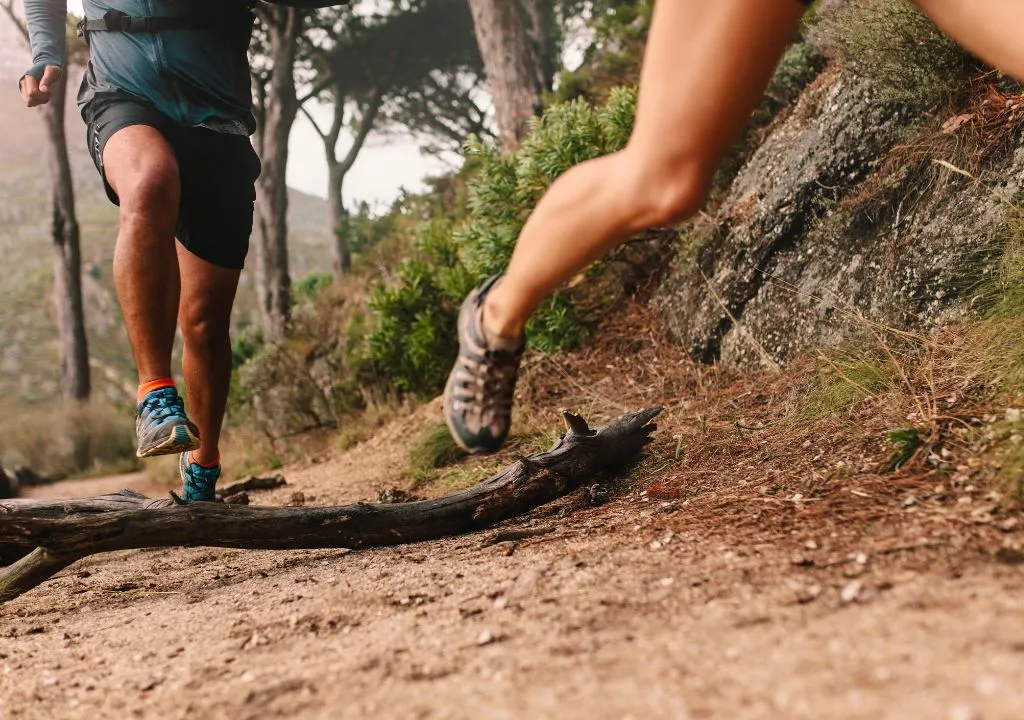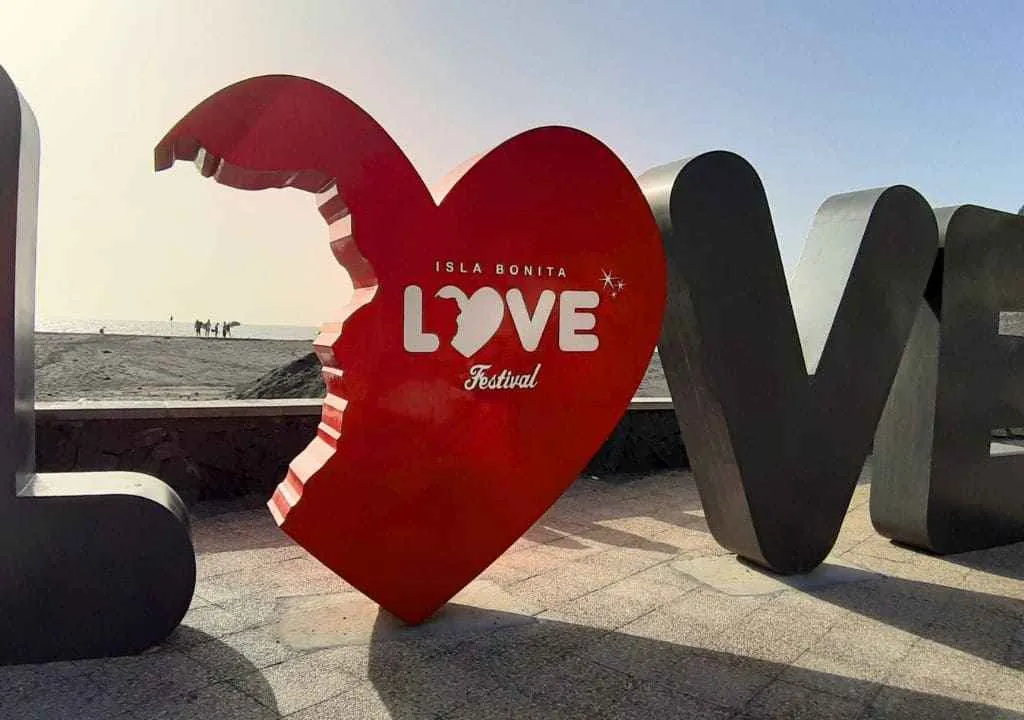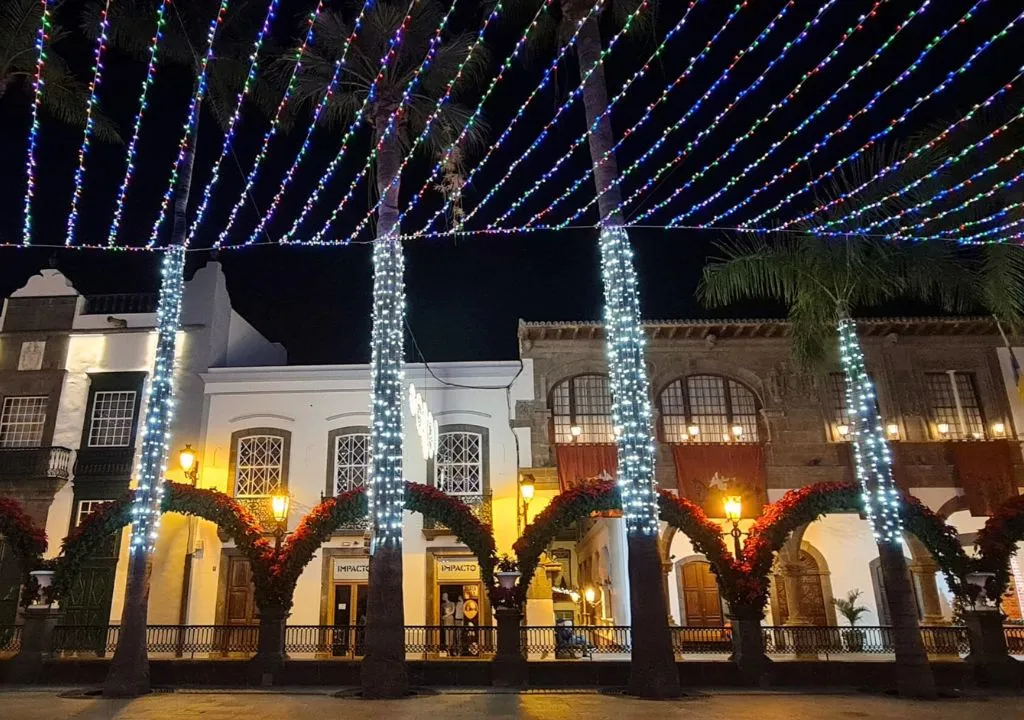The Bajada of the Virgin of Las Nieves is much more than a festival.
It is collective memory, shared emotion, and living tradition.
Every five years, Santa Cruz de La Palma transforms between June and August to honor the island’s patron saint in a celebration that is deeply felt and intensely lived.
This festival has been documented since 1680 and is considered one of the most important cultural expressions in the Canary Islands.
In 1980, it was declared a Festival of National Tourist Interest, and in 2007 it received recognition from the International Centre for the Conservation of Heritage for its historical and cultural value.
→ Program of the Patronal Festival in Santa Cruz de La Palma 2025
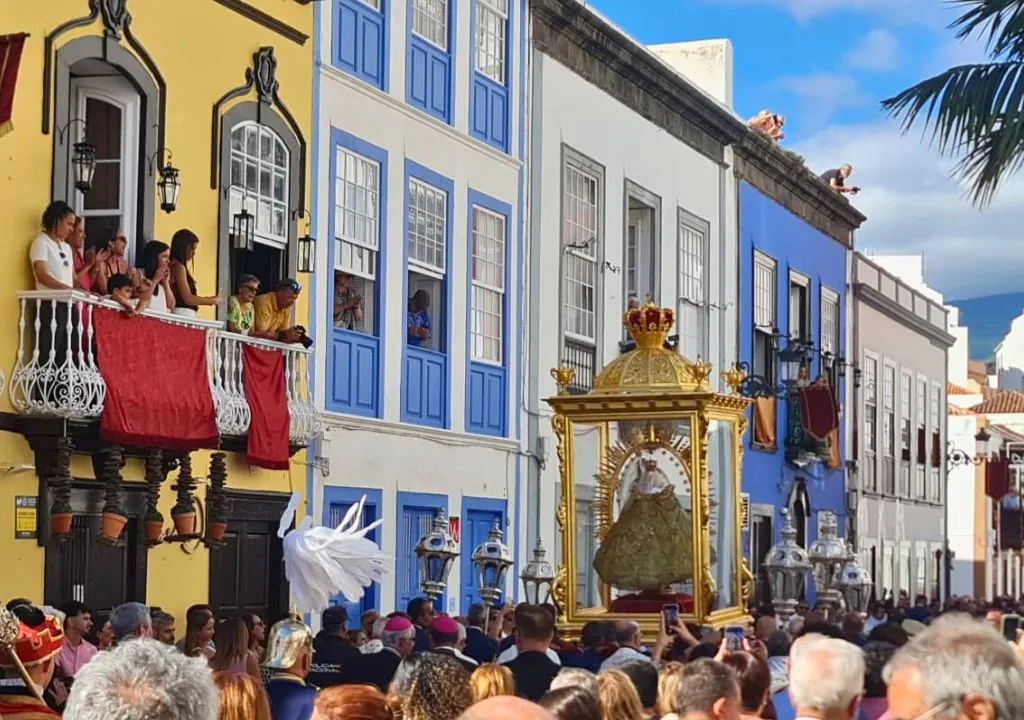
The Beginning of the Celebrations: Semana Chica
The celebrations begin with preparatory events and the transfer of the image from its sanctuary.
During the so-called Semana Chica, held on the first Sunday of July, one of the most symbolic acts takes place.
Pilgrims carry down the silver pieces that make up the Virgin’s throne in the traditional Bajada del Trono.
Shortly afterward, the image descends toward the historic center, where it remains in the Main Parish Church of El Salvador throughout the festivities.
Semana Grande: The Most Anticipated Events
The Semana Grande, which begins on the second Sunday of July, brings together the most famous and well-attended events of the Bajada.
The Night of the Pandorga
The Pandorga is an especially emotional and family-oriented night.
In the days leading up to it, children and adults create handcrafted lanterns filled with color and creativity.
At nightfall, families gather and walk down from Avenida del Puente, moving through the streets of the historic center accompanied by the municipal band. Thousands of lights illuminate the city, creating a truly magical atmosphere.
Today, the Pandorga symbolizes the light that guides the Virgin’s path toward the capital and represents childhood wonder within the Lustral celebrations.
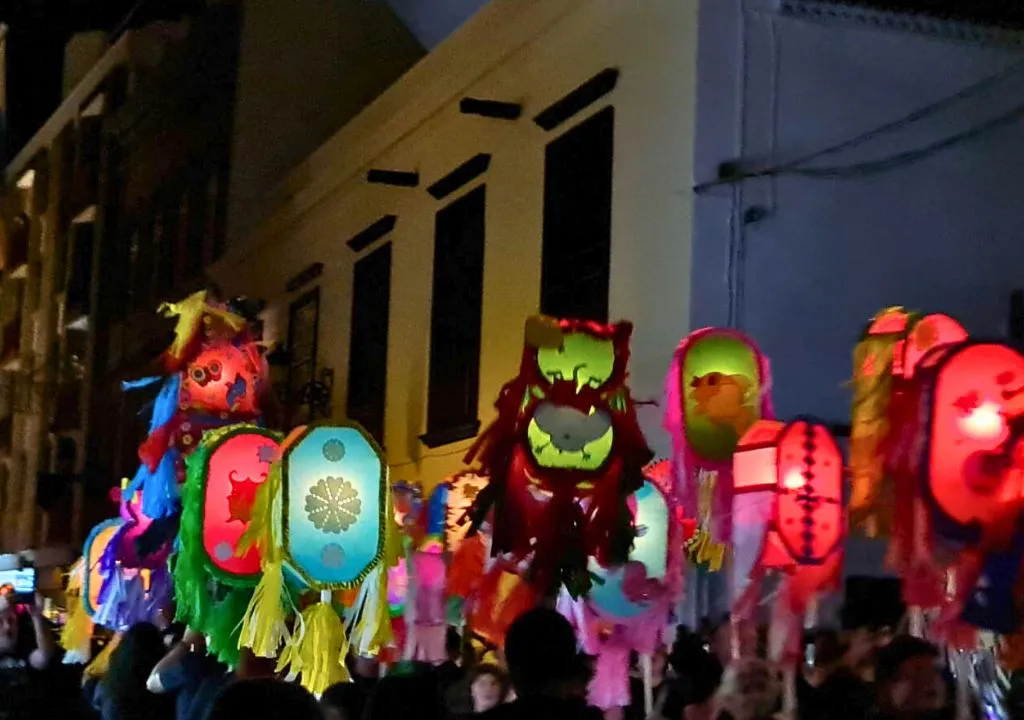
The Dance of the Mascarones
The Dance of the Mascarones fills the streets with giants and big-headed figures representing historical and social characters from the Canary Islands.
It is a joyful, accessible, and highly participatory event that blends humor, music, and popular tradition.
This parade turns the historic center into a meeting place where people of all ages enjoy the festive atmosphere together.
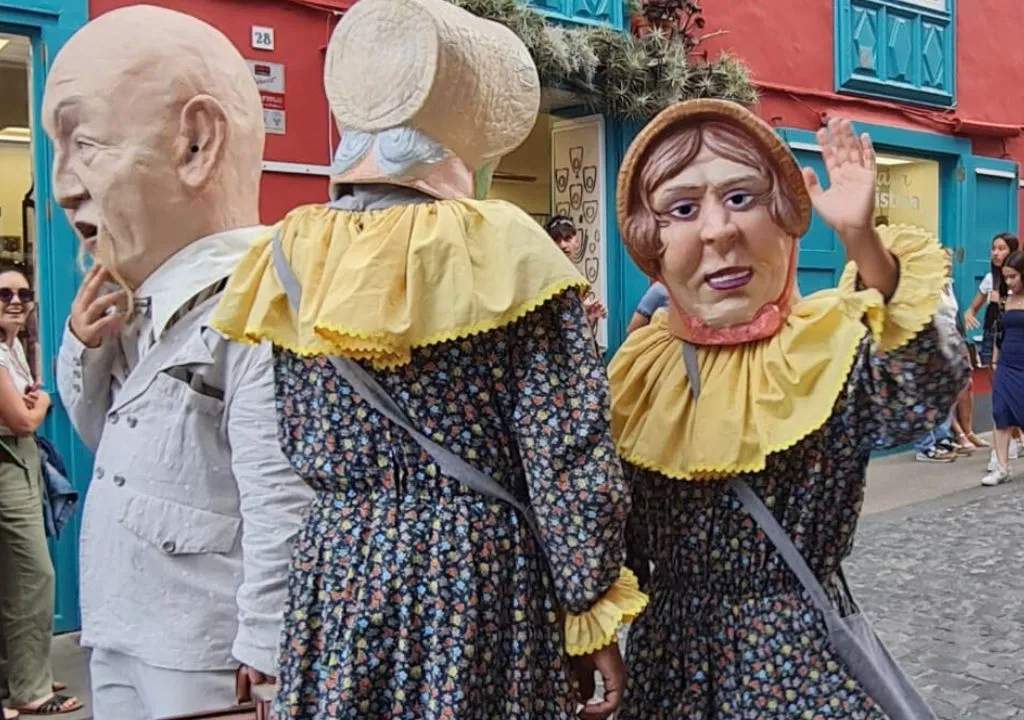
The Minuet
The Minuet is one of the most elegant and visually striking events of the Bajada.
Inspired by the gardens and palaces of Versailles, this ballet recreates the aesthetics of the 18th century through carefully designed choreography, classical music, and refined costumes.
Although it premiered in 1945, it has become an essential classic and one of the most eagerly awaited moments of the festivities.
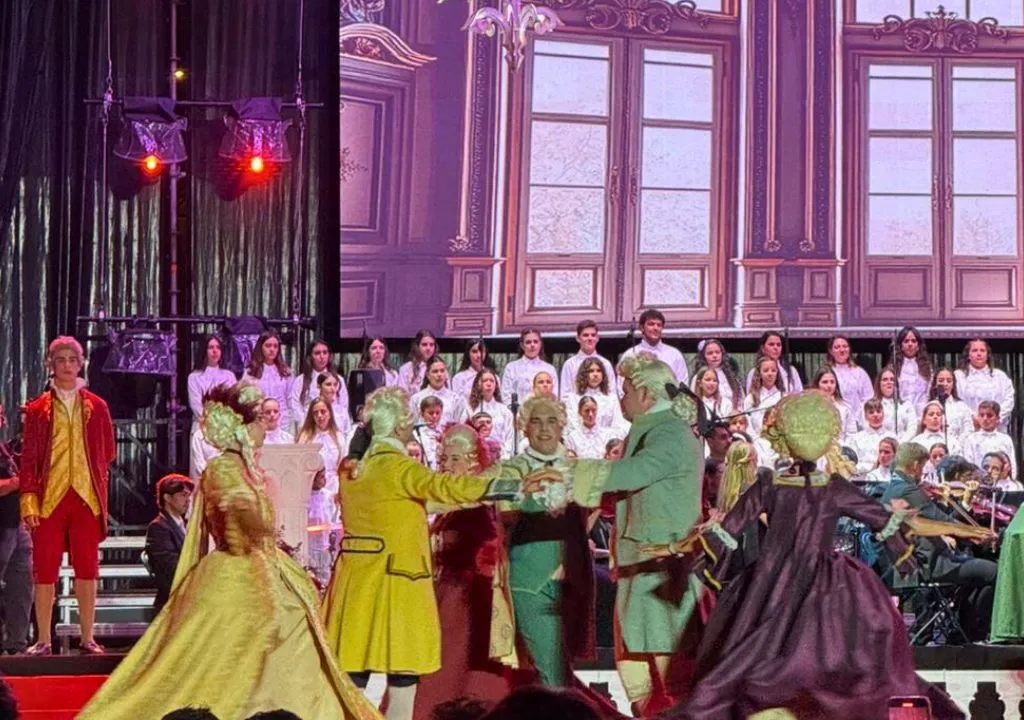
The Allegorical Carriage, the Dance of the Acrobats, and Other Traditional Acts
The Allegorical and Triumphal Carriage and the Dance of the Acrobats add theatricality and symbolism to the program.
Music, scenery, and movement combine to reinforce the baroque character of the festivities and their artistic richness.
The Descent of the Virgin
The Bajada itself is the central act of the celebrations.
The image of the Virgin of Las Nieves descends from her sanctuary to the historic center, accompanied by a massive crowd.
In 2025, this moment took place on July 12, becoming one of the most intense and emotional days of the entire celebration.
The Dialogue Between the Castle and the Ship
This is one of the most spectacular and symbolic events.
As the Virgin approaches the city, a fictional naval battle is staged.
A castle positioned on high ground engages in dialogue with a ship located near the Alameda. Cannon fire and sound effects recreate the confrontation, heightening public anticipation. After the dialogue, the Virgin continues her journey toward the Parish Church of El Salvador, followed by thousands of people.
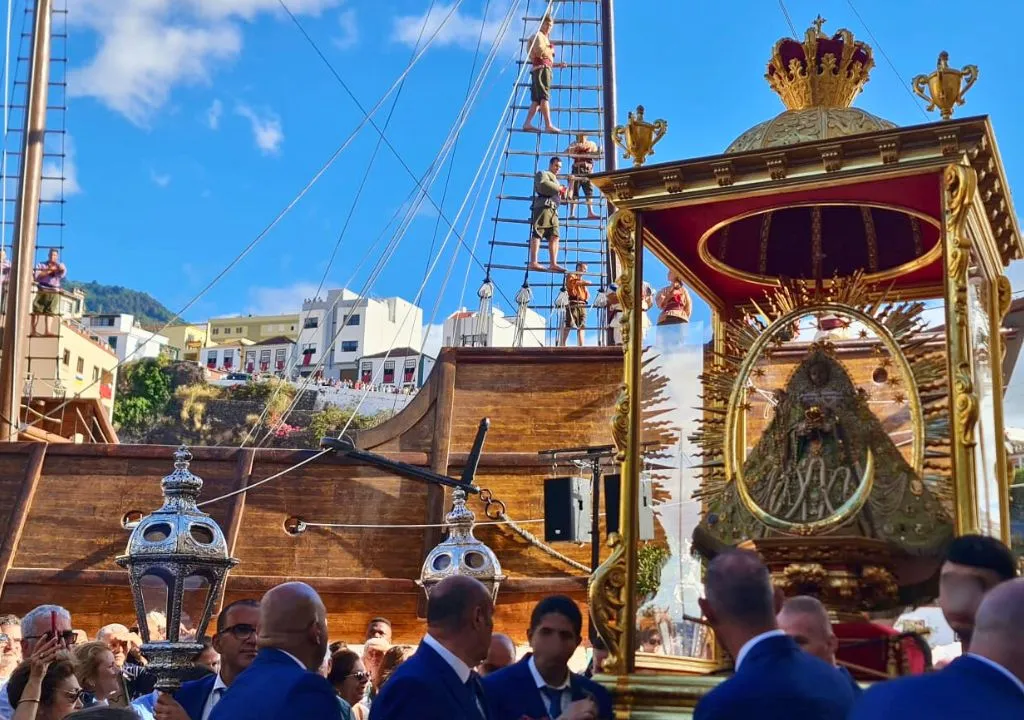
The Welcoming Loa
When the Virgin reaches Plaza de España, the Welcoming Loa takes place.
This is a musical composition performed by a choir, soloists, and a symphony orchestra.
It is one of the most solemn and emotional moments of the entire Bajada. Devotion, silence, and music merge into a single instant that many consider the spiritual heart of the festivities.
The Return Procession
The celebrations conclude on August 5 with the Return Procession.
The Virgin returns to her sanctuary in an act of great solemnity.
It is a farewell filled with emotion, promises, and gratitude. A closing moment that marks the end of the lustral cycle and leaves a lasting impression until the next Bajada.
The Dance of the Dwarfs: The Symbol of the Bajada
The Dance of the Dwarfs is the most iconic and anticipated event of the Lustral Festivals. Its origins date back to 1833, and it has since become a unique cultural symbol.
A total of 24 dancers participate, men and, since 2025, also women, selected through a demanding audition process.
They begin dressed in identical tunics, whose design changes with each edition.
After passing through a small booth, the secret transformation into the Dwarfs takes place, featuring their characteristic numbered hats from 1 to 12. From that moment on, they dance to the rhythm of a polka performed by the San Miguel Municipal Band.
After several performances at the fairground, the Dwarfs walk along O’Daly Street, known as Calle Real, spreading their magic through the city until dawn.
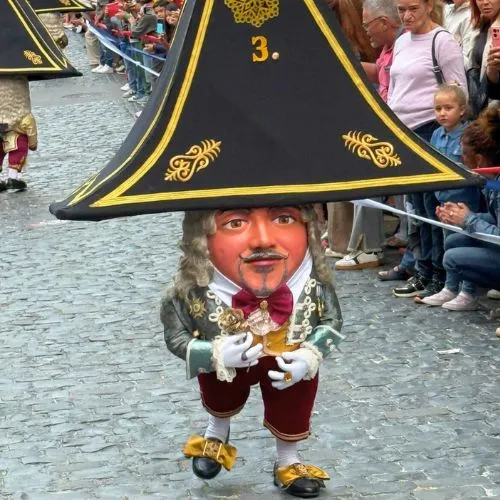
Practical Tips to Enjoy the Bajada
- Where to stay
– Book well in advance.
– July is the most in-demand period.
– Also consider accommodation in Breña Baja, Breña Alta, and Los Cancajos.
- Getting around
– Walking is ideal within the historic center.
– Arriving early is recommended for major events.
- Extra transport during peak dates
During key dates, local public transport, air, and maritime services increase capacity to meet high demand.
Curiosities About the Bajada of the Virgin
- In the historic center, there is an official Bajada store where you can buy T-shirts, mugs, and souvenirs related to the festival.
- Additionally, figures of the Dwarfs have been submerged in the Atlantic Ocean as part of an artistic project linked to an underwater theme park inspired by this dance.

